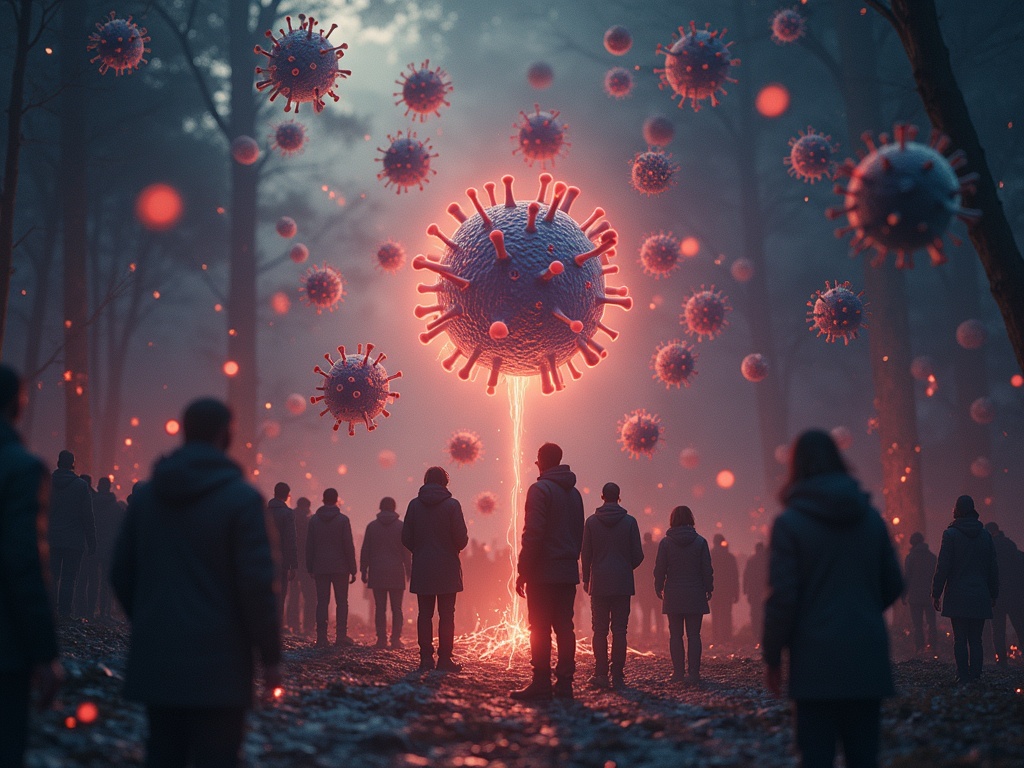Exploring the Frontier of AI-Designed Viruses
Introduction
In recent years, the landscape of bioengineering has been dramatically transformed by the advent of AI-designed viruses. These are viruses created through artificial intelligence algorithms to potentially combat bacterial infections more efficiently than traditional methods. By leveraging the capabilities of AI, scientists aim to address significant challenges in the field of genetic engineering and revolutionize bacterial treatment. The importance of AI-designed viruses lies not only in their innovativeness but also in their potential to redefine medical treatments and bioengineering practices globally.
Background
The Evolution of Genetic Engineering
Genetic engineering has been a cornerstone of modern biotechnology for decades. The continuous evolution of this field has led to groundbreaking innovations, with AI becoming an integral part of its advancement. AI’s role in this domain has fundamentally changed how scientists approach and solve complex genetic puzzles.
Limitations of Traditional Bacterial Treatments
Traditional bacterial treatments, such as antibiotics, have reached limitations due to increasing antibiotic resistance. This pressing issue has propelled researchers to seek alternative methods, including the design of specialized viruses that can selectively infect and kill bacteria.
Insights from MIT Technology Review
As highlighted by the MIT Technology Review, AI plays a crucial role in pushing the boundaries of what’s technically feasible in bioengineering. These articles often provide deep insights into how AI is integrated into the creation of these viruses, drawing from expert opinions and emerging trends in the field source.
Emerging Trends in AI-Designed Viruses
Breakthroughs in AI-Designed Genetic Codes
A notable breakthrough in AI-designed viruses involves research teams in California that have utilized AI to create genetic codes for viruses. These viruses can replicate and specifically target bacteria, opening doors for novel treatments and the development of AI-designed life forms. This intersection of AI technology with genetic engineering is setting new precedents in bioengineering.
Industry Influence
The influence of alternate industries, such as the hydrogen sector, also affects perceptions of bioengineering innovations. As noted, the challenges faced by the hydrogen industry, like changes in governmental tax credits, mirror the regulatory hurdles in AI and genetic engineering fields.
Key Insights from Recent Developments
Significant Statistics and Industry Opinions
Recent articles and research have provided significant insights into the potential and challenges of AI-designed viruses. For instance, a report from the International Energy Agency outlines the intricate state of sustainable technologies, including bioengineering source.
Ethical and Scientific Challenges
The development of AI-designed viruses is not without ethical and scientific hurdles. The potential for misuse of AI in creating harmful biological agents poses a significant challenge. Moreover, the scientific community continues to debate the moral implications of engineering new life forms, akin to how society viewed cloning a few decades ago.
Forecast for AI-Designed Viruses and Bioengineering
Future Advancements
Looking ahead, AI-designed viruses are poised to become a cornerstone in the treatment of resistant bacterial infections. As AI technologies advance, so too will the precision and efficacy of these engineered viruses.
Regulatory and Global Dynamics
Potential shifts in regulatory frameworks could accelerate the development and deployment of AI-designed viruses. With technological advancements, countries like China are likely to play a pivotal role in shaping global bioengineering trends, reflecting their growing influence in the tech and biotechnology sectors.
Call to Action
The rapidly evolving landscape of AI in bioengineering suggests that staying informed is crucial. Readers are encouraged to follow platforms like the MIT Technology Review for the latest updates in AI-designed viruses and their applications. By keeping abreast of these developments, we can better understand and contribute to the ongoing discourse surrounding the future of bioengineering and genetic engineering.
For those interested in further exploration, a detailed report on the intersection of AI technologies with bioengineering can be accessed here.
